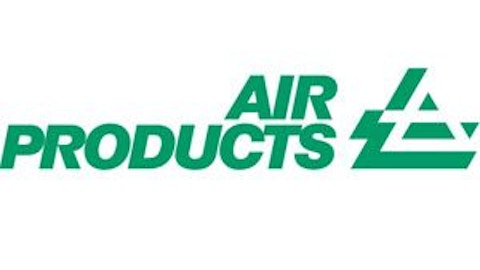Polished.com Inc. (AMEX:POL) Q1 2023 Earnings Call Transcript August 4, 2023
Operator: Good morning and welcome to the Polished Conference Call. Please note that certain statements made during the call constitute forward-looking statements made pursuant to the Safe Harbor provisions of the Private Securities Litigation Act of 1995 as amended. Such forward-looking statements are subject to both known and unknown risks and uncertainties that could cause actual results to differ materially from such statements. These risks and uncertainties are described in the Company’s financial statement press release and its filings with the SEC. The forward-looking statements today are made as of the date of this call and the Company does not undertake any obligation to update the forward-looking statements. Please note that today’s call is being recorded. I will now turn the call over to Polished CEO, Rick Bunka; and Polished CFO, Bob Barry. Please go ahead.
John Bunka: Good morning, everybody. I’m going to start by thanking you, our investors, for your patience during this challenging period. Since Bob and I joined in the fourth quarter of last year, we’ve been unable to have standard communication with you due to the company’s extensive audit and the related process for preparing these delayed financial statements. We fully recognize this has been extremely frustrating for you and everyone involved. Fortunately, now that the company is current on its filings. We will normalize our Investor Relations efforts and shareholder engagement. On today’s call, we plan to cover three main topics followed by a Q&A. First, we will address why the audit – wire audit and related process took so much time.
Second, I’d like to address the operating results for last year 2022 and the first quarter of 2023. And then third, we’d like to discuss our priorities and what we’ve called a fix and rebuild year for 2023 and the opportunities that we see ahead. With respect to the first topic, it’s worth providing a recap of where the company was when we joined in October. At that time, the Board’s audit committee was in the process of carrying out an internal investigation into business operations under the former management team. The investigations concluded in December 2022, followed by a public disclosure and presentation of the findings. Shortly thereafter, we received notice from our external auditor of their resignation. We immediately began onboarding a new auditor and started a reaudit of the company’s historical results.
The audit was complicated by the departing firm’s refusal to share documents and information related to their previous work. As a result, we were required to reaudit all of their work for 2021 and 2022. This effort substantially elongated the audit process resulting in a target release date of 7/31. I’m not restating this as an excuse, but simply trying to provide the context on where we were and where we are today. Regarding the operating results for 2022, we can say with great clarity that the performance of the business throughout 2022 was very disappointing. As stated in the 10-K, the prior management team pursued revenue growth above all priorities. In many cases, the proper systems and controls were not in place to ensure reliable performance.
The results in the second and third quarters of 2022 showed that while the company spent extensively on marketing, personnel – marketing and personnel, sales and margin were both compressed and target volumes were not achieved. This caused considerable disruption in the business, and the bottom line reflects that impact. It’s important to note that the same time window, mid-summer last year, consumer spending and performance within the appliance industry began to slow, impacted both by inflation and rising interest rates. In the fourth quarter of 2022, our overall sales volume had slowed across all major categories, but most notably in kitchen mass, which had been driven largely by consumer liquidity and the housing market. The luxury market, however, had remained strong.
In response, we pulled back on our marketing spend and reduced our inventory levels. Throughout the first quarter of 2023, overall volume remained challenging, while the luxury category continued to perform. Our focus was to improve operational control and expense discipline. It’s important to note that these efforts show that even with reduced volume, the company can deliver more normalized operating margin and positive cash flow. Our expectation was that we would be able to restore volume through measured improvements in marketing and several tactical strategies. In two weeks, we will be releasing results for the second quarter of 2023. We have, however, provided guidance for revenue and margin. Our business continues to be impacted by the industry headwinds and we have been limited in our ability to reverse these trends.
We remain optimistic through the balance of the year for our ability to recapture momentum during the balance of the year. But that said, we thought it was prudent to reduce our estimates for sales and EBITDA for the rest of this year. We are now forecasting annualized net sales between $375 million and $400 million, with a low single-digit EBITDA margin for 2023. Our focus has to be to build the systems and practices for this business to ensure that we have a stable foundation for future growth. If we continue taking the right steps for the duration of the year, we are confident that the company will be positioned to guide to and execute towards profitable growth and cash generation in 2024. Final points I’d like to touch on are the term loan and our strategic review process.
Given the term loan is now due 13 months from now, we are being very proactive and have engaged financial advisers to pursue non-dilutive financial options. This step, coupled with sound execution, should enable us to source the type of options that we will need facing that timetable. We continue to work with Jefferies to evaluate strategic alternatives that can maximize value. The process has moved slower than we would like because of all of the factors noted above, but we expect a discovery phase to pick up and potential parties to continue on. Of course, there is no assurance that this process will result in any transaction or sale. Now that we’ve covered that overview, I’d like to open it up for Q&A for Bob and I.
Q&A Session
Follow Polished.com Inc.
Follow Polished.com Inc.
Operator: We will now begin the question-and-answer session. [Operator Instructions] And our first question will come from Josh Peters of Morgan Dempsey. Please go ahead.
Josh Peters: Good morning, Rick and Bob. Thanks for taking my question.
John Bunka: Certainly.
Josh Peters: First, I really feel like I have to congratulate you for what you accomplished here, not just getting the filings done, although, you make a very good case for why that was a heavier list than what we’ve been expecting out here, but those same filings, they made clear that the previous management team was not delivering and you’ve pulled this business out of the ditch in a very short amount of time and as tough as an experience as this has been for everybody. I think you should be very proud of what you’ve achieved. And I want to express my gratitude, as well as my opinion that the business is now in safe and successful hands. So as tough as it’s been over the last year, I think it’s best to lead off with gratitude, and I wanted to express that publicly as a shareholder.
John Bunka: Well, thank you, Josh.
Robert Barry: Thank you.
Josh Peters: Second – and then I’d like to let other people ask questions. Although, honestly, I’m very enthusiastic to have this opportunity to sort of reengage and relearn what’s going on with the business. But what seems really outstanding to me about what you accomplished in Q1 in terms of cost management and the gross margin improvement is that, it seems to me the basic economics of the business as we would have understood them from the outside a year ago, are probably still largely intact. And if we’re not spending like crazy to try to drive unrealistic revenue growth, this can still be much more than a low single-digit EBITDA margin business as sales recover. So can you comment both on what you’re doing to continue to manage down fixed costs and our breakeven point? And then also talk about what the contribution margin is on incremental sales as sales come back.
John Bunka: Well, thank you, Josh, for your question. So to recap, I guess your question, you’re asking to help with clarity on the operating margin and the opportunities that may exist as we go forward. The point I think you’ll see in the filings that’s quite clear is the company had expectation of significantly higher volume and was both expensing toward it and had established vendor economics with the assumption of much higher volume. As those volume estimates were missed, the company was laboring to handle the inventory and receipt flow that was purchased to support it, as well as the cost structure underlying it. But that was magnified by a statement that rippled through most of the quarters that the volume rebates associated with vendor purchases, the targeted goals were missed and that represented a significant reduction from prior years.
Those goals as we go forward our efforts have been to stabilize those rebates and both to create upside. So as we report financial performance going forward, we’re trying to set the expense structure to provide cash flow at these lower levels of volume, but also provide the upside in the – with the result if we exceed the revenue goals, those target revenue rebates would then also kick in. So the assumption that we’ve provided you at the forecast level, Josh, is that we’re not relying on increased rebate – volume rebate revenue, our volume rebate incentives on the margin line, and that does expand operating margins throughout. So as we grow and as we continue to exceed our performance, that’s really where the leverage occurs.
Josh Peters: Okay. And then just one quick follow-up here that I know that you’ve also taken down headcount, you’re consolidating your warehouse footprint in New Jersey. Can you outline the timing and the potential impact of some of those fixed cost reduction, operating cost reduction as we go through the year?
John Bunka: Yes. I mean, there was – progressively, over the course of the nine months that Bob and I have been here, there has been gradual reductions in headcounts that happened throughout the year. And that process is documented in both the K and the Q. And that expectation is that we’ll continue to try to right-size the organization where it’s marked to have the right number of people supporting the business, so that we can be profitable. Key to that, as you alluded to, was we do operate within two distribution centers in New Jersey and one in St. Louis. Our business plan calls for stealing those two distribution centers into one facility, alongside DMI. One of our facilities today is next to our partner, DMI, and it’s highly efficient for us to be next to them.
So our expectation is that through the balance of this year, we will prepare for moving to a single facility. And we don’t expect to see any of that results in fiscal 2023, but should see that benefit in 2024.
Josh Peters: Okay. Thank you very much. I will cede the floor to other questions. But again, congratulations to you and your team.
John Bunka: Thanks, Josh.
Robert Barry: Thank you.
Operator: The next question comes from Peter Rabover of Artko Capital. Please go ahead.
Peter Rabover: Hey, guys. Well, first, so I’d like to make a couple of comments. I’ll echo Josh there to say, Rick, I think, yes, you’ve done a great job now that you see – we can see the filings and what the previous management team left us with. I would say, yes, thank you for that. I guess one comment I would make, I think, as we saw by the stock price performance for the last week is what happens when you keep shareholders in the dark, for too long for things like the balance sheet and the performance. And so I hope that’s a pretty tough lesson learned for everyone here that open communication and more disclosure is the key. The second comment I’d like to make, I think, one of the things that was a little shocking for me is that the size of the Board that we have and that what the amount of money that they make given what happened last year and that, Ellery, and – you’re listening to it, makes $250,000 for a consulting fee.
I guess the comment I would make is, I would expect some resignation from the Board or at least a significant pay cut. And I hope that money goes toward your bonus. Or seeing some 13 being formed for filings from the Board in the next few days when that window opens because I guess, with the stock price down, like, 99%, 90% that, I don’t know. I think we need some really, really fresh people on the Board that did not fall asleep at the wheel and watch the previous management sort of destroy the company. So that’s sort of a frustration comment from me that I hope the Board is listening to. Even said that, I would like to ask some questions. So the first one…
John Bunka: Before you do, can I make a statement?
Peter Rabover: Yes, yes, absolutely.
John Bunka: I guess some parallel to that statement.
Peter Rabover: Yes.
John Bunka: Obviously, as a later a merger to this business and coming in, I can appreciate everything you just said. But what I have noted from this Board was in a very tough situation to move with haste to take an insider claims of activity and respond very quickly in a process. I recognize this has been 12 months of darkness, and it’s difficult. But the Board, as from my vantage point, the Board acted very quickly to have investigation results and the management team out by October and have us in place by November. The Board has been very supportive to Bob and I to address this and put things in order. So I think it’s important to note that.
Peter Rabover: Okay. Right. It is a $20 million company with a $600,000, and I guess including Ellery’s consulting thing, $250,000, almost a $1 million in expenses that for $20 million market cap is pretty egregious. So I hope they consider a pay cut while he goes through a transition. But I appreciate the color. So I guess, the first couple of questions have to do with – so one of the reasons it seems if you read the financial statement that the big increase in debt is just basically refinancing the customer deposit policy that we’ve had in the past, right? So that balance went down from 30 something to 5. Obviously, the debt increased by the same amount. Has that issue been resolved? Has that refinanced? Like, are you anticipating any more cash outflows related to that?
John Bunka: No, that – yes, Bob, and let me try the first part of it and then if you can provide color. I think it is very significant that the company changed its vendor deposit strategy, or its customer deposit strategy, and did that early on. Yes. So are you speaking of vendor deposits or customer deposits?
Peter Rabover: No, I’m talking – the vendor deposit is going to be my next question, I’m talking about the customer deposits.
John Bunka: The customers – the recognition of revenue was a topic that is of real importance that the company does this the right way. This is a practice that is right. We have adopted it. There is balance sheet effect from that, and that is a major positive for the manner and way that we run this business. And with that, I’ll let Bob respond.
Robert Barry: No, I was going to comment that the customer deposit number was a legacy from the Goedeker Television Company that the money was collected when the customer placed an order, that customer deposit number got up to in excess of $20 million. And part of the proceeds from the capital raise to make the Appliances Connection acquisition. Those proceeds were partially used to reduce that, and some portion of, although a smaller portion of the bank refinance debt paid off the rest. It took a long time for those customer deposits to run off. The remaining ones are of special – deposits on special orders. And in the builder business, we sometimes collect a deposit upfront from a builder. So customer deposits are effectively gone from the old legacy way of doing it. And there’ll be no more disbursements related to the legacy way of doing it.
Peter Rabover: Okay. So then the other one is the vendor deposits, right, that number is substantially higher, especially relative to the level of business. And I assume that’s because we’re not – because the financials, right? So is that a number that we can expect to be kind of a cash flow release going forward, now that the financials have been filed. And I guess a little bit more awkward question. Is there a problem that Albert is on the Board of DMI while this is happening?
John Bunka: Well, first off, yes, Albert, no longer – as of November, no longer on the Board of DMI. And that vendor amount that you are looking at as a vendor deposit is the DMI, predominantly the DMI deposit, and Bob can explain.
Robert Barry: The vendor deposit builds up by the rebates we earned from DMI and other vendors, and it’s an accumulation of that number that builds the vendor deposit. That vendor deposit is – allows us to borrow up to 95%. That used to be 80% borrowed, 95% of our balance for our accounts payable. So if we reduce that balance by, say, $10 million, we’d have to pay off $9.5 million of accounts payable. So that secures our deposits. It’s not an indication that vendors are holding money as a result as a credit issue on our behalf. It’s strictly then DMI and secures accounts payable to them.
Peter Rabover: Okay. Look, the theme here is I’m just trying to look for is that [something important]…
Robert Barry: Yes. So that’s a – the main point of that is that vendor deposit is function of payables. And it’s – because that is generally obligate, it’s backed by obligations that we have to buy goods. So they are usually a like amount.
Peter Rabover: Okay. I I’m just looking for ways that or, I guess, assumptions that the company can release some operating cash flow to reduce the debt level this year in a lower environment. And so that’s kind of my theme there. But maybe that’s the – but the next question I have is just maybe comment on the refinancing and the balance sheet. And are you worried at all about the next 13 months? Are you – or there’s a pretty big glut of private credit out there? We might not get the best terms, but can you comment on the potential refinancing of the company of the debt?
John Bunka: Yes. I think two main themes of the response and then – and I guess, and then some color. The two major things I have for you is that first, it’s significant in material that we’ve concluded a very thorough audit of 2021 and 2022 and produced with this formatted super 10-K, an opinion of our auditors, that looks forward and allows management to say that we – in a very clear statement that we believe the company has the liquidity necessary to operate the business in the foreseeable future. And the second piece we’ve been – we complement the bank group and their participation with us. They have been very active and supportive. And that process of being able to amend the facility and to provide the runway ahead also gives us comfort, as we look forward.
Naturally, we have a – here’s the color. We have a good, but a continued work to do. We’re going to continue to refine this business model and expect to produce improved operating results. And that is our primary focus as we go forward.
Peter Rabover: Okay. Thank you for the statement. I guess I’m not really sure if that answers my question on the refinance.
John Bunka: Yes. They’re both a question of – I mean, the refinancing is a function of our performance and our liquidity of the business. So again, you asked our confidence level. And our confidence level is high. So with regard to the – specifically, I mean, if your question is the refinancing, we have – and as I said in my opening remarks, we have engaged a firm to assist us in that process and we’ll try to – it’s a fairly structured process. We’ll try to keep you informed as we go along. But at this point, we don’t have much to share.
Peter Rabover: Okay. Thanks. Look, so I keep taking up the time, but I think it’s – we have plenty of it now that we have talked for a year. The last one I think is more important. So the Q1 – if I look at the Q1, the cash operating expenses seem to be running in, like, $19 million, $20 million. If I’m, $80 million annualized, give or take. And so I’m just curious and this was before the headcount reduction that you mentioned or the consolidation. So what do you think the natural – the good run rate of the company’s, like, SG&A OpEx business is? And I guess maybe the gross margin levels that you could feel confident with now that you’re focused more on a more profitable business.
John Bunka: Well, and there’s two ways to that, that we’re looking at it at that. And I think you’re going to – we’ll be able to give a little bit more color as the second quarter results come out, but you’re going to see that our margin structures at our present volume has been performing within a relative range that are fairly predictable and our expense structures that you’ll see in the first couple of quarters. Our expectation is that we’re going to continue to be able to gain efficiency as the years go – as the year progresses through the third and fourth quarter. So our expectation to you is that those first couple of quarters ought to be a pretty good indication of what the model looks like at its present volume. The opportunity as we go forward and what we see is that the margins expand that this is a fairly heavy fixed structure – fixed cost business.
So the margins tend to move up quickly both on the EBITDA and pure margin side when volumes rise. So we’re going to get good at operating it at this level and seek to drive volume higher.
Peter Rabover: Right. No, no, I completely appreciate the, I guess, the beauty of the business model and the substantial operating and financial leverage that we have. I’m just wondering, like, at about – at the first quarter’s SG&A and the $375 million run rate seems like it’s right about breakeven, give or take, like single-digit millions. But you had also mentioned that you’re going to do headcount stuff and the warehouse consolidation. So how that’s going to impact the fixed cost structure? I guess if you can give any color at all, I’d appreciate that.
John Bunka: Yes. The fixed – the biggest costs we have going forward are fixed costs related to our facilities and those are going to be a little bit longer-term. As I said, those are going to be 2024 enhancements. And I think we’ll have to share those kinds of expectations with you as we go forward. I don’t know that I can do that now.
Operator: The next question comes from Vishal Mishra of Bard Associates. Please go ahead.
Vishal Mishra: Good morning, Rick and Bob. I have a question about the normalized level of sales. I mean, sales revenue numbers are down because of the – because of macro reduction in demand and also something going on within your business. So what was the sort of a last year for normalized demand for the appliances market. Is it – was it 2019? And specifically for your business, what can we say about the normalized levels? And do you think we have reached sort of the trough of the sales cycle?
John Bunka: Well, the two levels of questions you’re asking and that’s the industry trends. The industry trends last year reported numbers have been that during COVID and the years 2021 and 2022 that it was strong demand for the categories. And the growth of the category was only limited by the availability of goods. There were considerable supply chain issues. And as a result, there were both inflationary pressure on appliances. Prices were rising as well as, it was hard to obtain goods. That overall trend in the industry subsided last – beginning in September of last year where the industry flipped and negative operating results started to show at the industry revenue line among categories. That decline was anywhere from single to double-digit decline in all of the major categories, refrigeration, cooktop, virtually all elements of appliances were seeing decreases.
Those decreases have been projected through spring of this year and are expected to continue. And the industry has discussed that it has moved much more toward replacement and away from remodels and investment. So those two are the national trends that, I think, everybody is aware of and assessing. That has been our experience. Our declines that happened, we were still seeing revenue growth through September of last year, and the declines started after September and moved through the numbers – the present numbers. That trend line has, but the clients have stabilized, and that is the basis for our expectation through the balance of the year. But there are still industry headwinds for sure.
Vishal Mishra: Okay, great. Thank you.
Operator: The next question comes from Adam Wilk of Greystone Capital Markets. Please go ahead.
Adam Wilk: Good morning. Can you guys hear me?
John Bunka: Yes.
Robert Barry: Yes.
Adam Wilk: Can you help quantify what low single-digit EBITDA margins means for fiscal year 2023?
John Bunka: I think we want to stay with that general range, and that’s a percentage of revenue in the low-single digits of the sales volume. And that’s a – I don’t know that we want to quantify an exact number, but we see the number being positive and low single-digit.
Adam Wilk: Okay. So in the press release you mentioned, in regards to the bank loan, you’re working with an independent financial advisor. Can you also provide a little more color on that, along with maybe your involvement with Jefferies at this stage in terms of the continuation of your strategic review or any sort of options you’re looking at or leverage the pull to drive value outside of operating the business?
John Bunka: Well, the Jefferies process, we’ve been public in our disclosure of the purpose behind it. And the process itself, it is bound. There are participants and it is bound by the confidentiality of that process. It has been longer than we all had hoped. We have been asked, what impact the absence of audited financial statements had on the process. And without a doubt, that is – has been a common request. We have been able to fill information requests from it, but the need for audited financial statements was important in this process. So it has elongated the process. And that being said, I don’t know that I can comment further on any specifics. Regarding the financial advisor that we’ve asked to help in the process related to financing, we have retained a firm that is working with us.
Its focus will be to identify and execute strategies that can – as I think, that the questions have surrounded and that’s free up either the balance sheet or cash in an effort to facilitate the financing of that debt facility.
Adam Wilk: Okay. Thanks. And then it looks like your – the interim tag has been removed from your title, but with no sort of, I guess, subsequent details. Is there any updates there regarding your role with the business or how you see things moving forward?
John Bunka: Well, Bob – yes, Bob and I are both still operating in the same capacity under the same titles of interim. And many have asked, we have been brought in. We came back to this business because we believe in it and we’re excited about it. It is a business that Bob and I both had familiarity with and felt there was a great group of people and a great reason for this business to be, which is why we’re back and why we’re focused. I know I speak for Bob that we feel like this is just a milestone in the effort of what we have in our work, we don’t believe our work is done. So at this stage, we’re still operating under the same capacity.
Adam Wilk: Okay. Thanks for taking my questions. That’s it for me.
Operator: This concludes our question-and-answer session. I would like to turn the conference back over to Rick Bunka for any closing remarks.
John Bunka: Well, I’d like to thank, everyone, for attending. I know this has been a long awaited call and obviously, we will seek to not have this kind of disruption as we go forward. As I mentioned, these efforts that we’ve made have been under great scrutiny, and it is always beneficial to share the color of our intent and where we’re headed as we go. So please look forward to us communicating regularly as we move forward. So thank you, everyone.
Operator: The conference is now concluded. Thank you for attending today’s presentation, and you may now disconnect.





